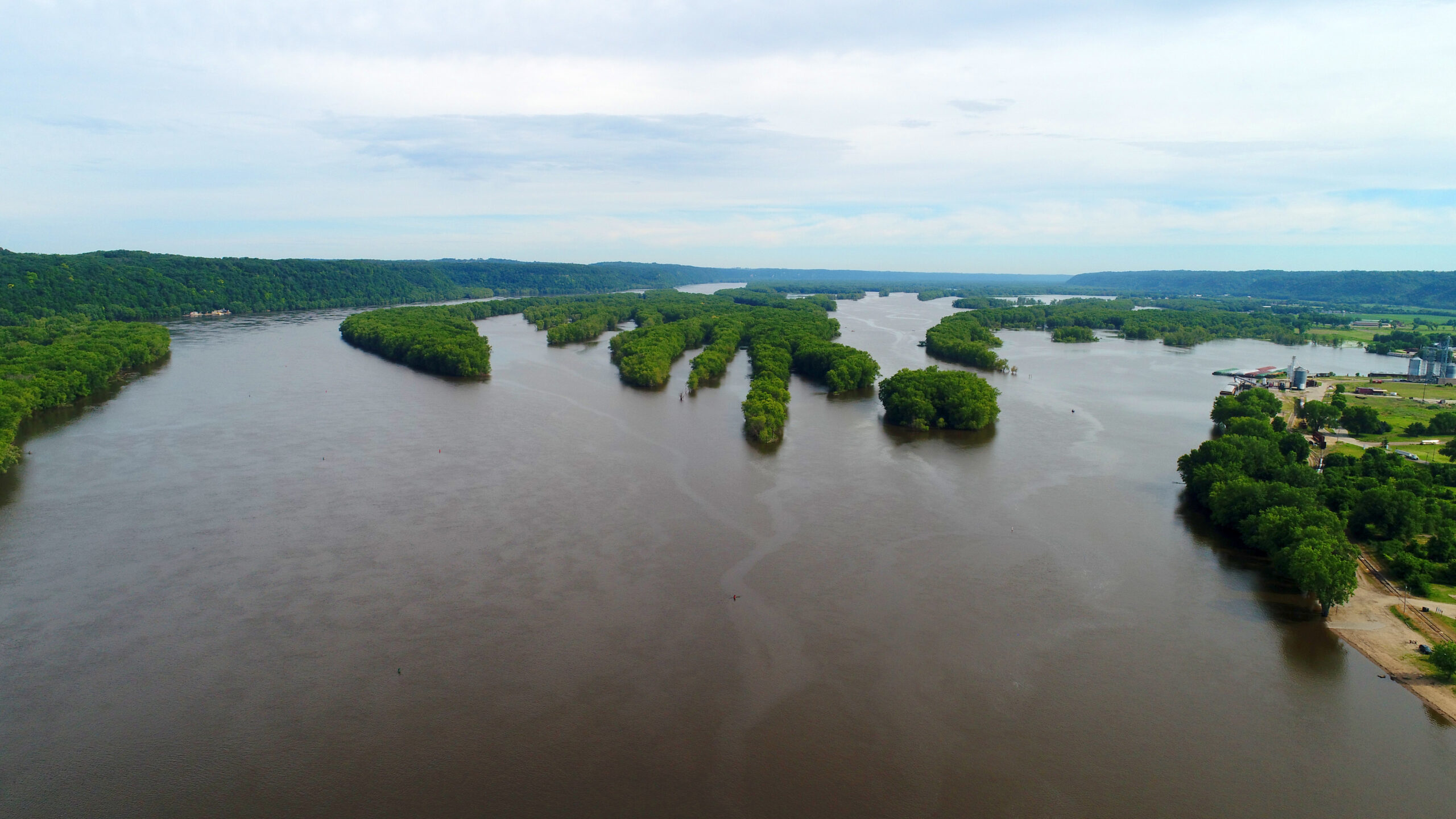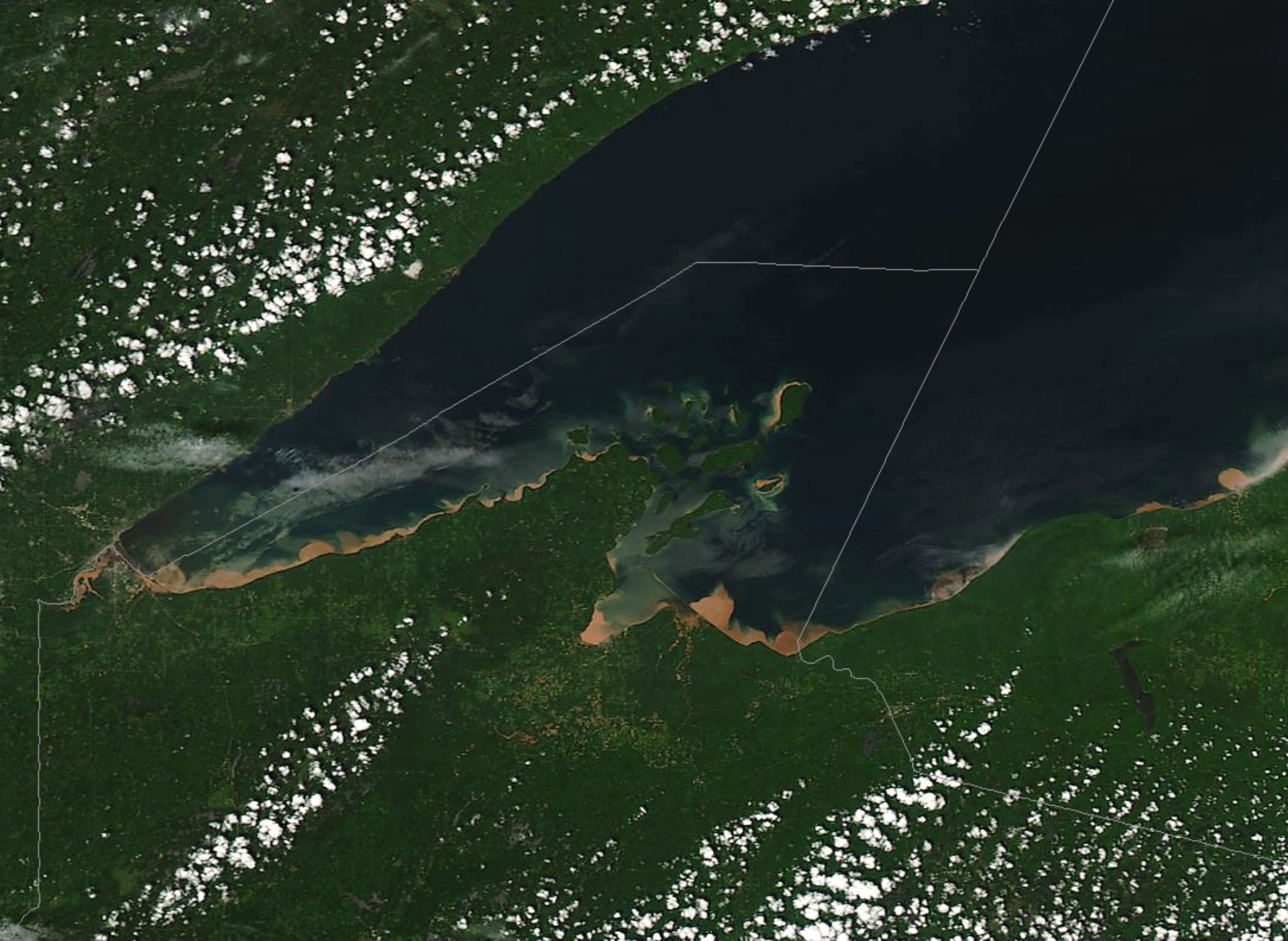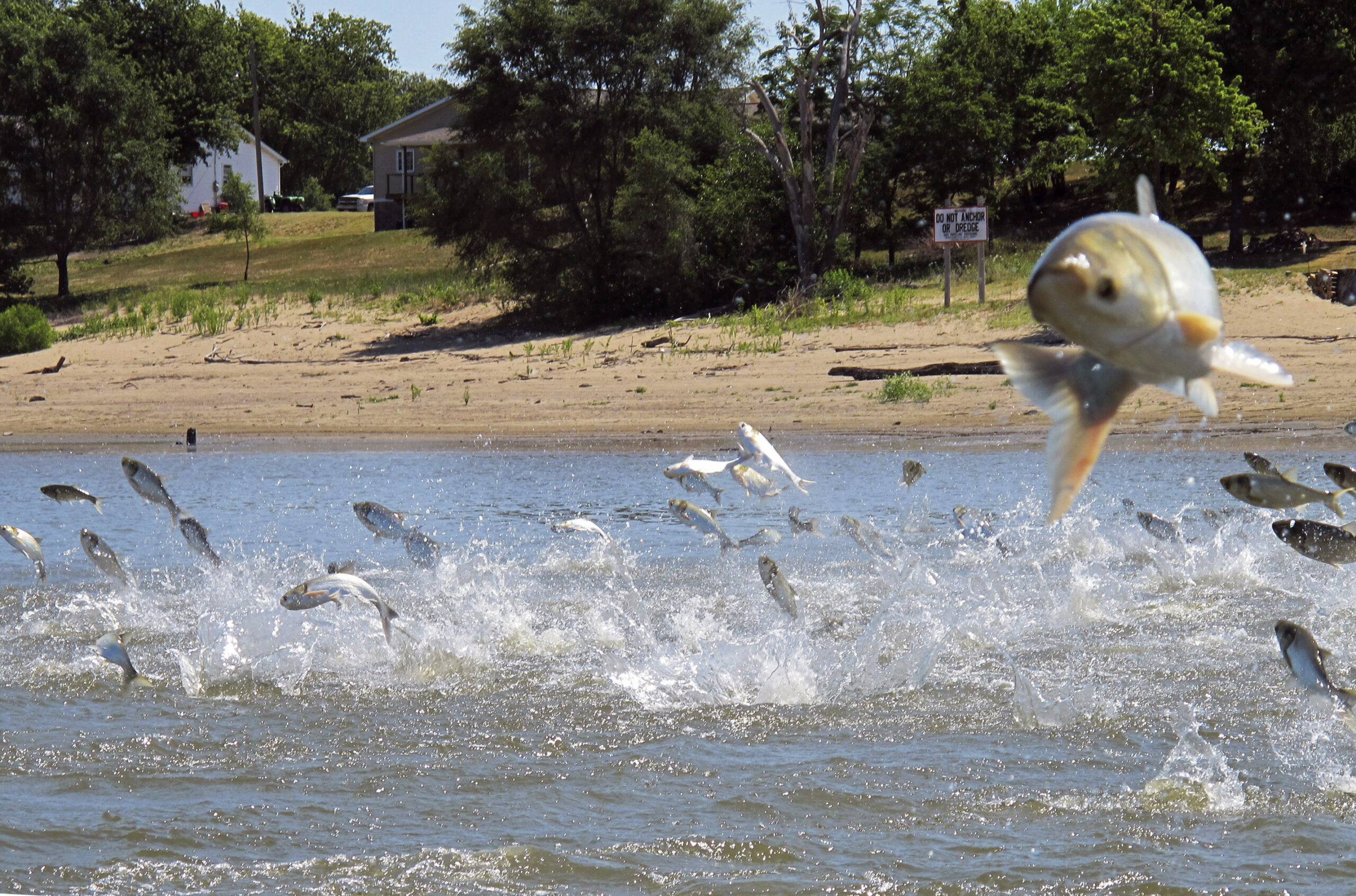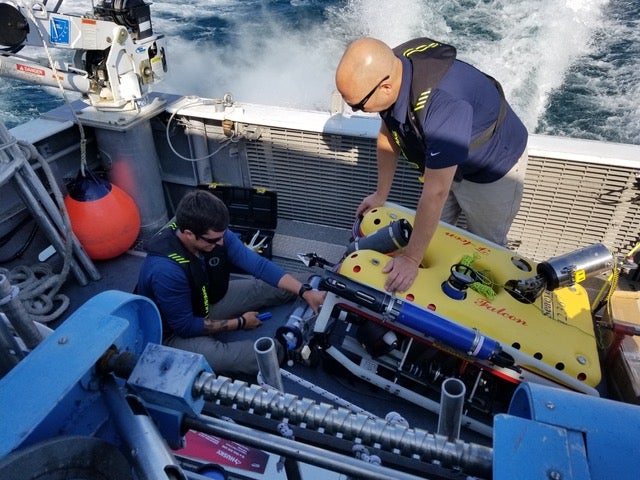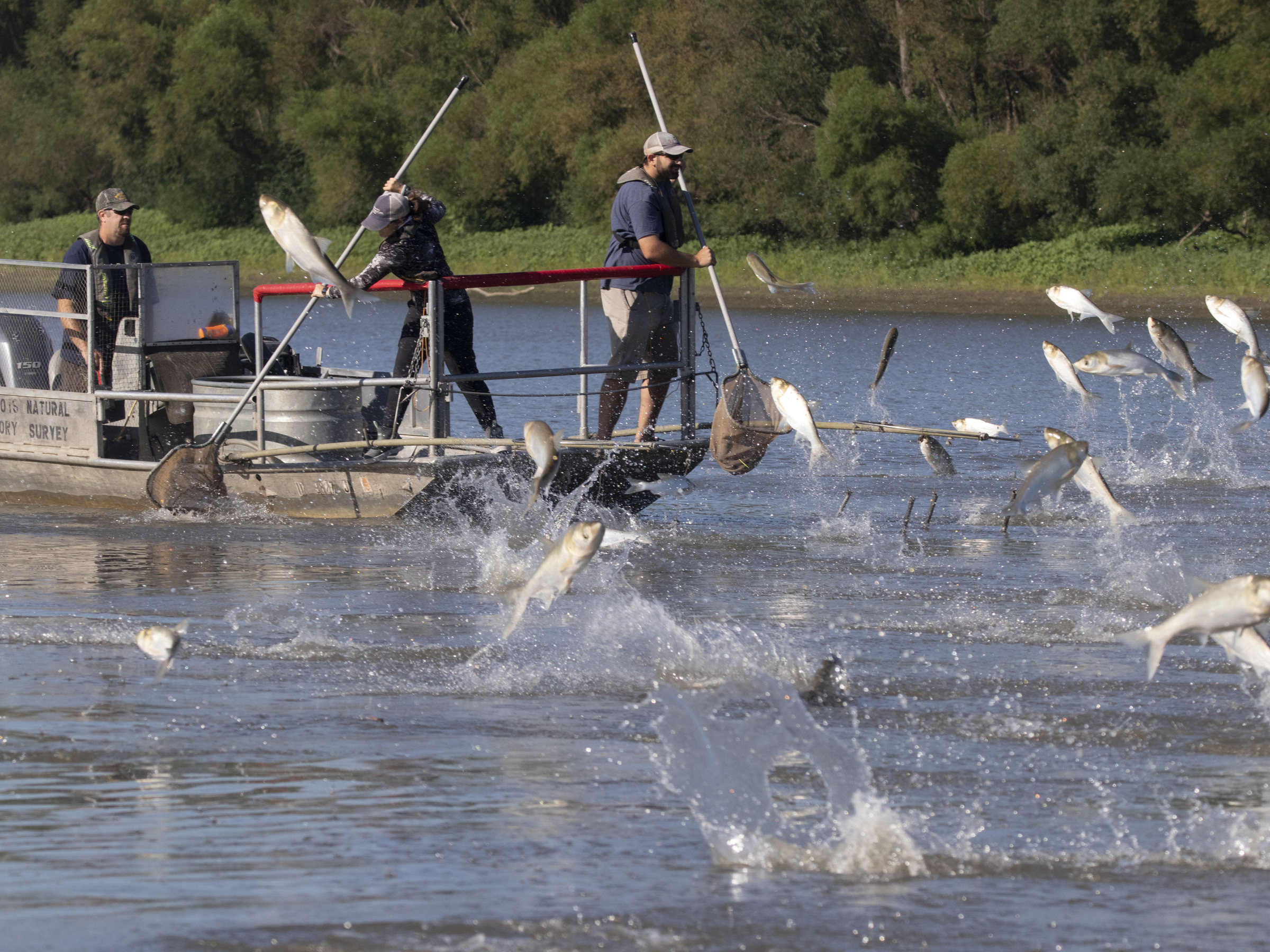Summers in Bay City when Frank and Cathy Dosdall were young revolved around Lake Pepin.
The small Wisconsin village is about an hour southeast of the Twin Cities at the top edge of the 21-mile lake, the largest on the Mississippi River. Decades ago, the lake was full of people swimming, waterskiing and hopping in boats to chase waves from barges that would pass through.
“Any (way) we could get on top of the water when we were kids, we tried it,” Frank recalled.
News with a little more humanity
WPR’s “Wisconsin Today” newsletter keeps you connected to the state you love without feeling overwhelmed. No paywall. No agenda. No corporate filter.
Today, so much sediment from upstream is flowing in that the community hardly has access to the lake that they once enjoyed. And they’re far from alone in feeling the effects of environmental degradation and other problems along the Mississippi River.
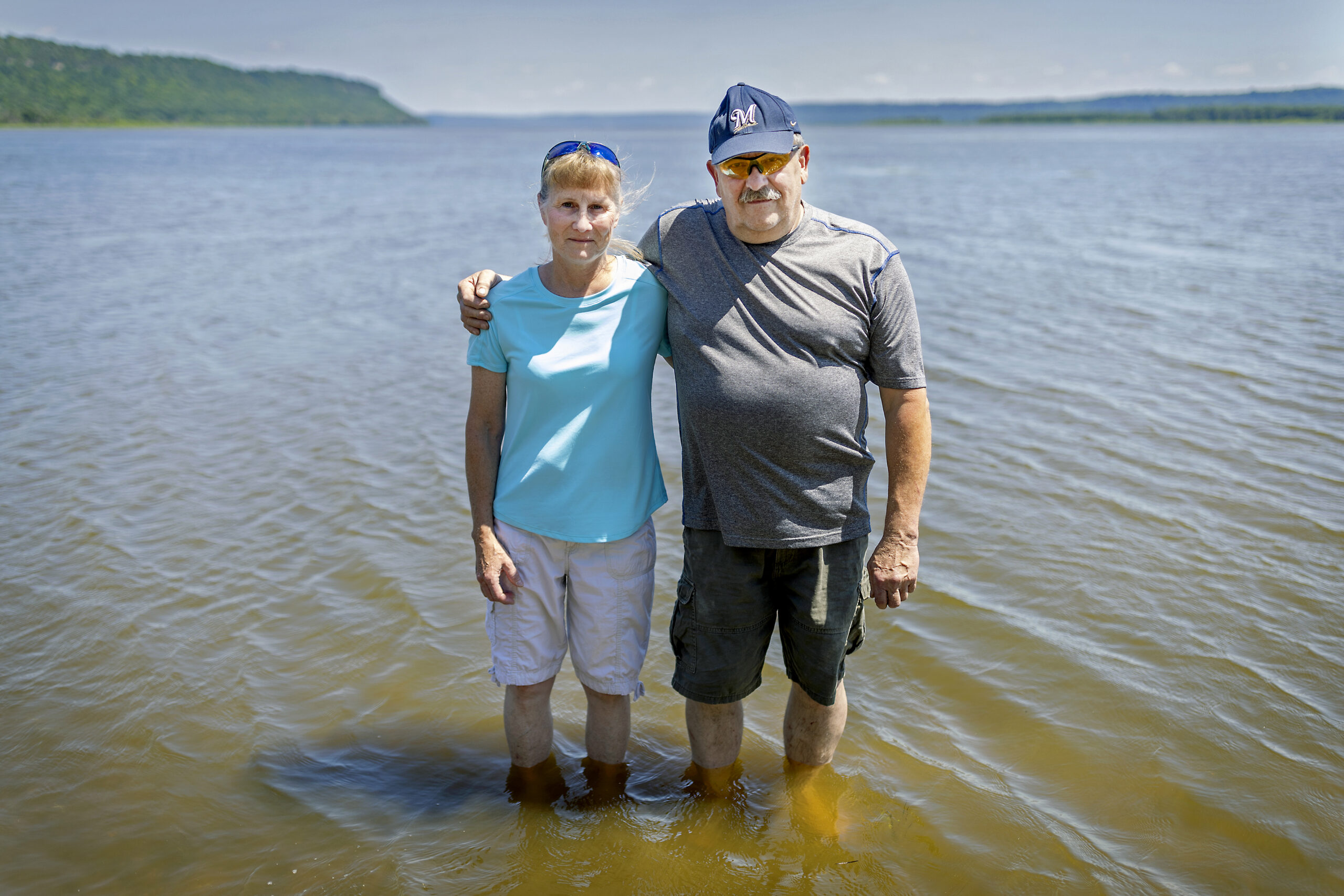
Flooding is happening with more frequency and lasting longer, changing floodplain habitats. Invasive species are working their way further up the river and into its tributaries. And despite efforts to curb pollution running off land and into the river, the dead zone where the Mississippi empties into the Gulf of Mexico still persists.
Advocates for the river are hoping that a proposed federal funding program, modeled after an effort to clean up the Great Lakes, could change that trajectory.
The Mississippi River Restoration and Resilience Initiative, or MRRRI, was introduced last June by U.S. Rep. Betty McCollum, a Democrat from the Twin Cities. It’s based on the Great Lakes Restoration Initiative, or GLRI, which launched in 2010.
Like the Great Lakes initiative, it would operate within the U.S. Environmental Protection Agency and provide hundreds of millions in federal funding to groups throughout the 10 states along the river. The money could be used to fight invasive species, complete restoration projects, improve water quality and protect against flood damage. The latter, advocates say, is more important than ever, with climate change accelerating and intensifying extreme flood events.
The Great Lakes initiative is widely recognized as a success story. To date, it has funded over 6,500 projects totaling more than $3 billion, and it got a recent billion-dollar boost from the bipartisan infrastructure bill. Republicans and Democrats alike have voted to increase funding for the initiative nearly every year since it passed.
The Great Lakes effort passed when support for the EPA was high and bipartisanship was more common. But in a polarized political climate, even champions of the Mississippi River legislation acknowledge it’s been difficult to build momentum in Congress.
Supporters say even if they have to play the long game, it will be worth it to band together the many groups that care about America’s Great River and get more money to address its many challenges.
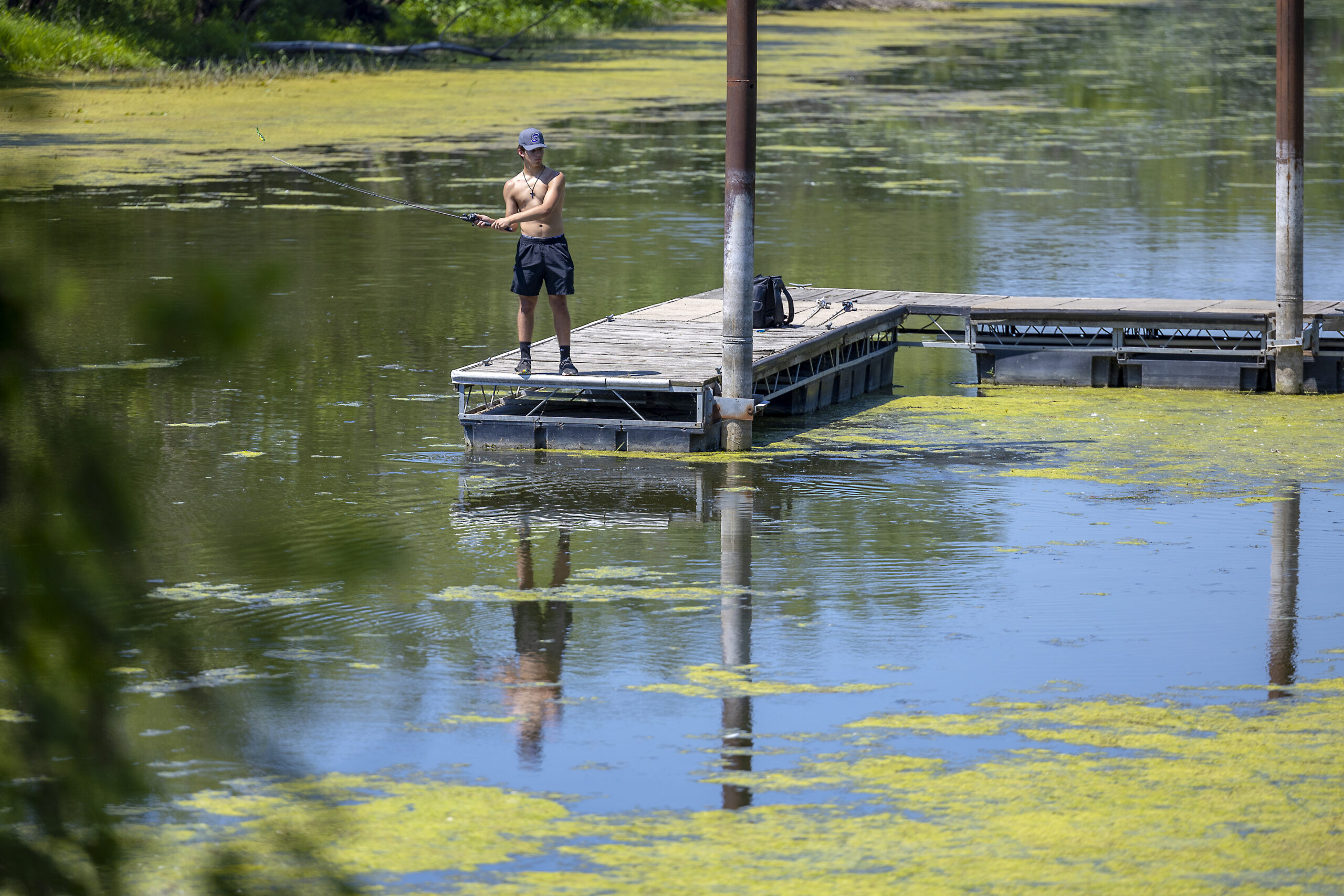
Mississippi River treated ‘like the nation’s sewer’
Roughly 20 million people live along the Mississippi River, which supplies drinking water to more than 50 cities, drives a recreation-based economy that generates $500 billion each year and is home to more than 780 kinds of fish and wildlife. The river’s basin encompasses 31 states and drains water from 40 percent of the continental U.S.
Despite its importance, funding for environmental projects is scarce, said Matt Rota, senior policy director at Healthy Gulf, based in New Orleans, La.
“While the Clean Water Act has done a good job of removing some pollutants from the Mississippi River, it’s still treated very much like the nation’s sewer,” Rota said.
Many environmental and health concerns plague the river: harmful algal blooms are forming in areas that are dammed; nitrogen pollution from fertilizer is making people sick; and cities are spending exorbitant amounts to filter their drinking water.
Another big issue is the massive dead zone that forms in the Gulf of Mexico off the coast of Louisiana each year, triggered by nitrogen and phosphorus pollution from agricultural runoff. This year’s dead zone is projected to be the size of Connecticut.
The lack of funds and mismatched concerns of stakeholders along the river make it difficult to reduce the size of the dead zone, Rota said.
Agriculture is largely exempt from the Clean Water Act, relying on voluntary measures from farmers to use conservation-based practices that help keep fertilizer in the fields and not in the water, Rota said.
“One of the things that MRRRI could do is put more money into that system,” he said.
The Great Lakes initiative has already laid a road map for how federal funding could assist farmers in protecting waterways, including things like switching to perennial grasses and planting cover crops.
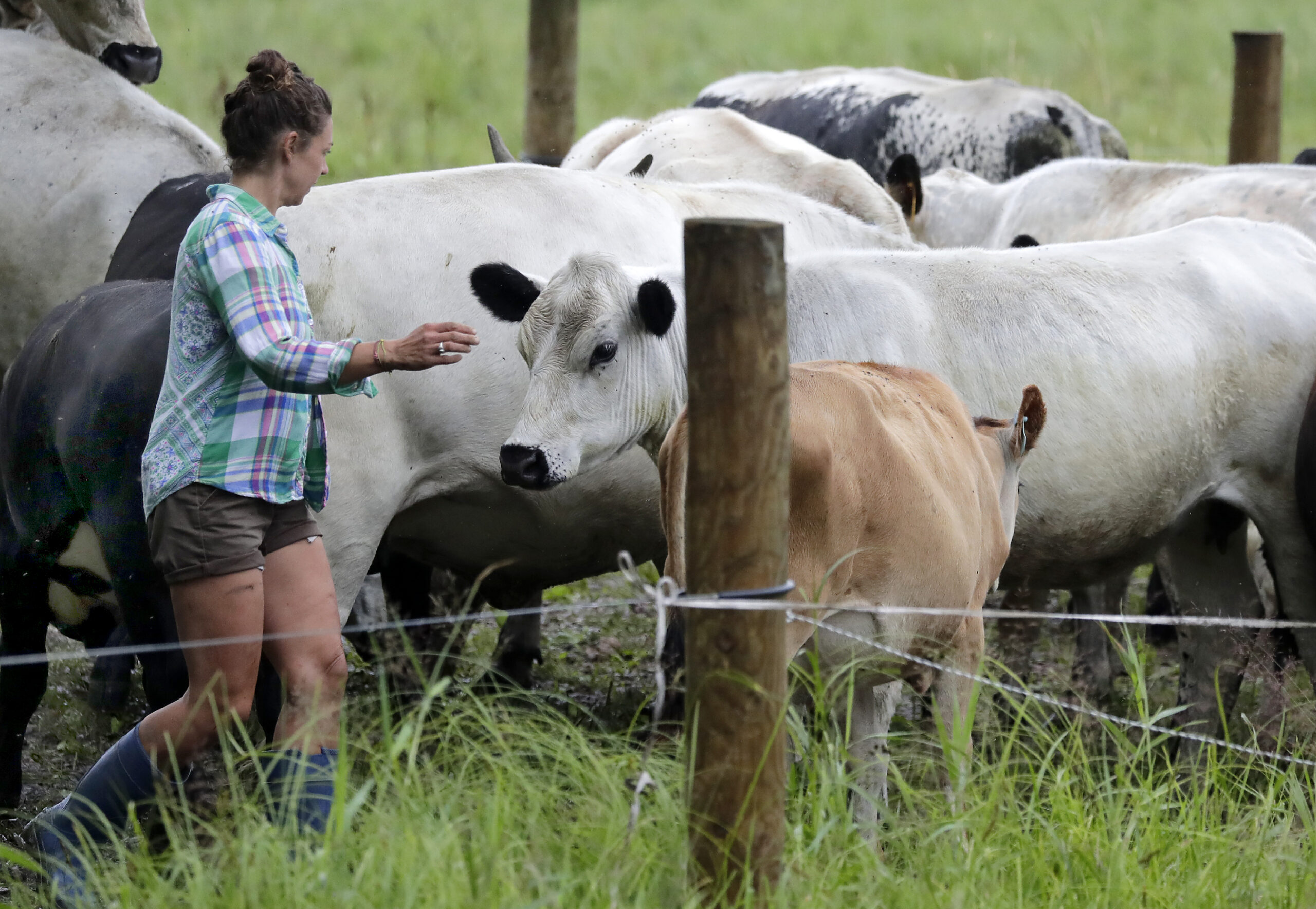
Great Lakes initiative has helped farmers keep waters clean
Rachel Bouressa was 37 weeks pregnant and holding her toddler’s hand when she first walked into her local Natural Resource Conservation Services office in Waupaca County, Wisconsin.
She was about to take over her family’s farm in New London with one small problem: she had livestock to manage — British White Parks, a heritage breed of beef cattle — but no fence to keep them on her land. The conservation office had funding to help.
The Great Lakes initiative works with other agency partners to reduce runoff and pollution in the lakes.
Bouressa’s farm sits in the Wolf River watershed, where a drop of rainfall travels just over 100 miles through the Fox River into the lower bay of Green Bay, picking up fertilizer and pollution along the way. The pollution-filled runoff from the many farms in northeastern Wisconsin is the likely cause of harmful algal blooms every summer that kill off fish and close beaches.
Bouressa’s farm is part of the solution. She practices managed grazing, where livestock can only graze one part of the land at a time, keeping the land continuously covered in grasses. The roots help bind the soil together and let water seep slowly into the ground, reducing soil erosion and runoff into nearby waterways. Practices like this could also greatly reduce the amount of pollution running into the Mississippi River.
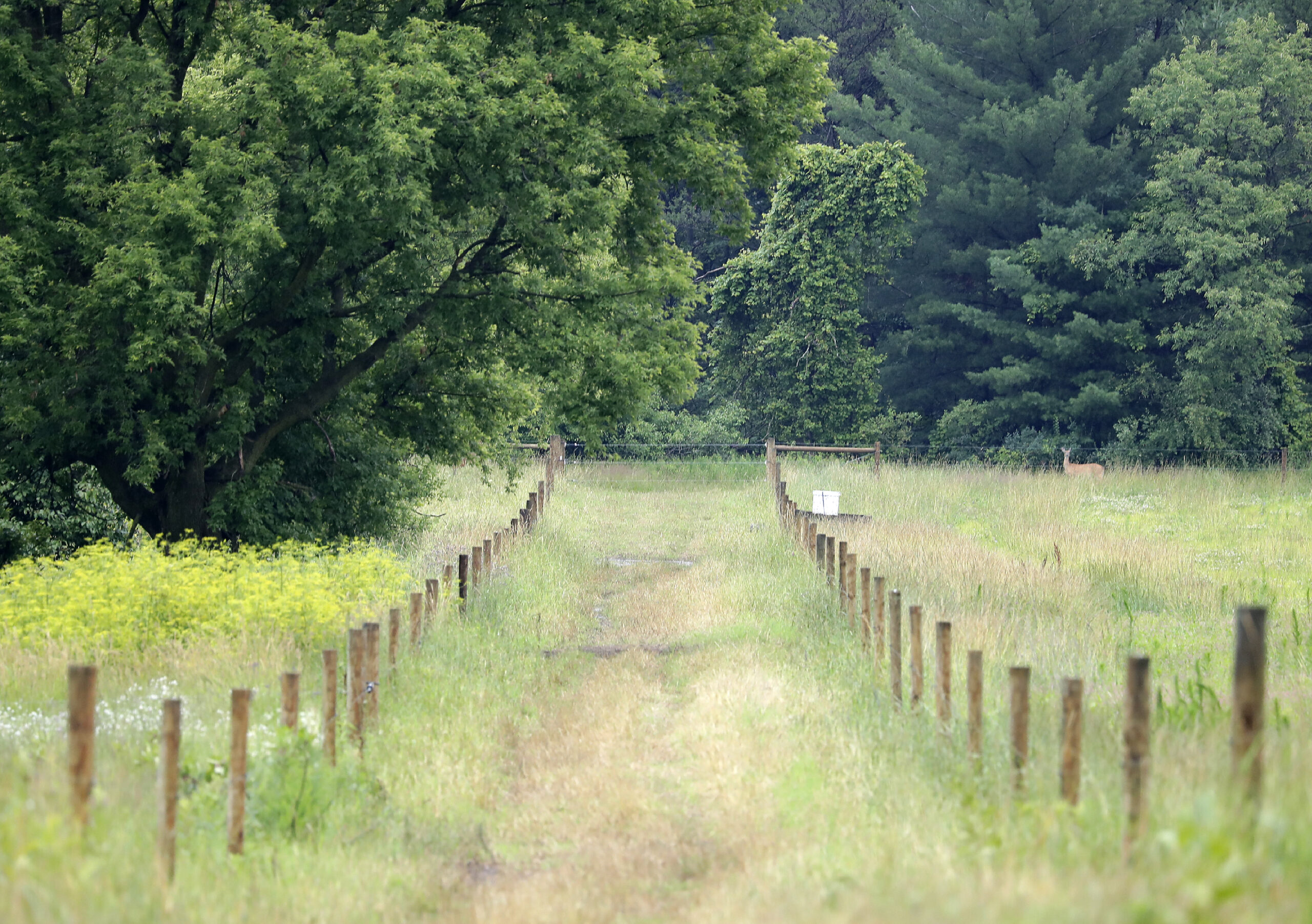
The initiative allows federal agencies, states and tribes to direct money toward projects like this.
An action plan that is updated every five years codifies the initiative’s main focus areas, which currently are cleaning up areas of concern, controlling invasive species, restoring habitat and preventing runoff.
Bouressa first received funding from the conservation office in 2016. In 2021, the initiative helped her buy more fencing, pasture seeding and water lines to convert additional land to managed grazing.
The funding “made my farming dreams come true,” she said. “I wouldn’t have had access to get the good fence that I needed without cost-sharing available.”
Mississippi River approach would mirror Great Lakes effort
With the Great Lakes Restoration Initiative helping people like Bouressa make strides for water quality for over a decade — and similar programs created for Chesapeake Bay and the Everglades — it begs the question why the Mississippi River doesn’t already have its own.
Among stakeholders, no one has a clear answer. But they suspect it’s because the states that border the river have different interests — and different problems, too.
“We hear a lot about ‘one river’ and connecting the upper and lower,” said Kirsten Wallace, executive director the Upper Mississippi River Basin Association. “But they’re so different.” Her association does not have a position on the Mississippi River legislation.
Initiatives that section off the river have been attempted before, said Maisah Khan, policy director at the Mississippi River Network, but until groups from across the basin can join together, the problems they’re working on won’t be solved. The dead zone was recorded at a record size just five years ago, for example.
“(The states) say, ‘We’re all trying our best on this,’ but letting each state try its best hasn’t really made anything better,” Khan said.
MRRRI project funding — which participating organizations have estimated could be about $300 million — would fall into four main buckets. Those include improving water quality, restoring habitats, reducing the presence of invasive species and creating natural infrastructure to protect against flood damage.
In the two years after its passage, EPA staff would meet key stakeholders along the river — municipalities, tribal governments, nonprofit organizations and universities — to craft an action plan, identifying which projects should receive funding.
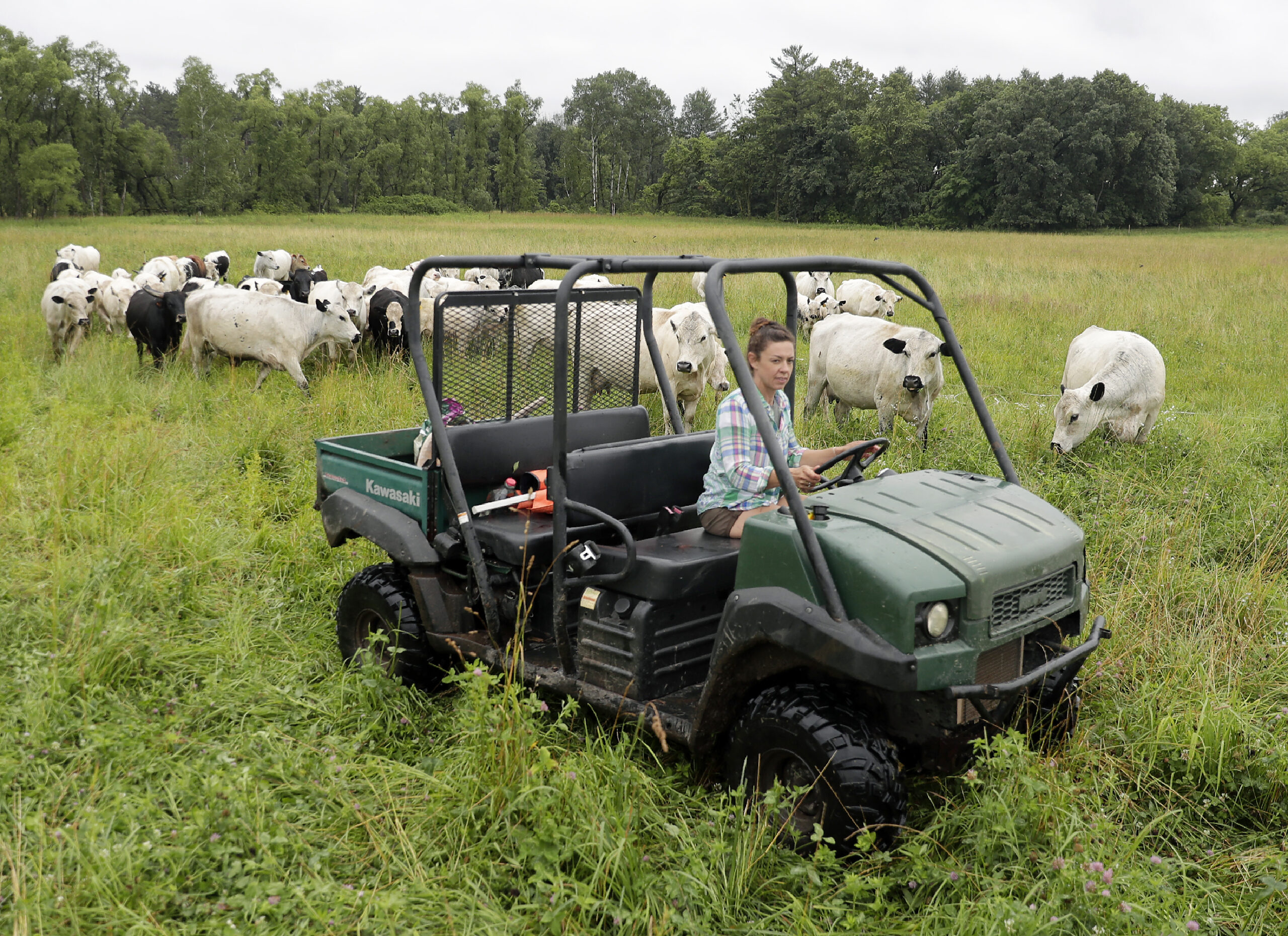
Alongside the action plan would be a science plan, which would create three regional hubs at universities in the 10 border states for research on the river’s challenges.
The current bill doesn’t outline specific projects that could be funded, and supporters hope that will make clear that communities get to drive it in the direction that works best for them.
In Bay City, for example, a multimillion-dollar Army Corps of Engineers project will dredge an access channel to connect its harbor to the lake again, as part of a larger habitat restoration effort. Though they secured money for that without MRRRI, funding from the legislation could help the project get replicated on other parts of the lake, said Rylee Hince, executive director of the Lake Pepin Legacy Alliance.
The financial investment, coupled with local control, could be a gamechanger for small river towns that don’t often see federal dollars come along, Hince said.
Further down the river, the Tennessee Wildlife Federation is hoping for more dedicated funding to help block invasive carp from coming out of the Mississippi River into the Tennessee and Cumberland rivers. They’ve been working for years to secure money for those projects from federal appropriations, said Lindsay Gardner, associate director of policy research, development and federal relations.
“You have to work that appropriations cycle every year, and it’s uncertain how much money you’ll get,” Gardner said. “Any funds that could help supplement those efforts would be really, really positive, because there’s just not enough money to go around.”
As a part of MRRRI’s action plan, 35 percent of the funds will be directed towards disadvantaged or low-income communities and communities of color, which disproportionately experience the effects of runoff pollution, low-quality drinking water and severe weather events.
“When you wall in rivers in one place, the river squeezes out of its banks somewhere else,” said Trevor Russell, water program director for the nonprofit Friends of the Mississippi River. “It generally falls on those who are least able to protect themselves from it.“
According to Khan, with the Mississippi River Network, one key lesson from the Great Lakes initiative is embedding that equity into the process from the beginning.
“The GLRI coalition had some growing pains around that to begin with,” Khan said. “For us, we wanted to make sure that we were thinking about that in the very beginning.”
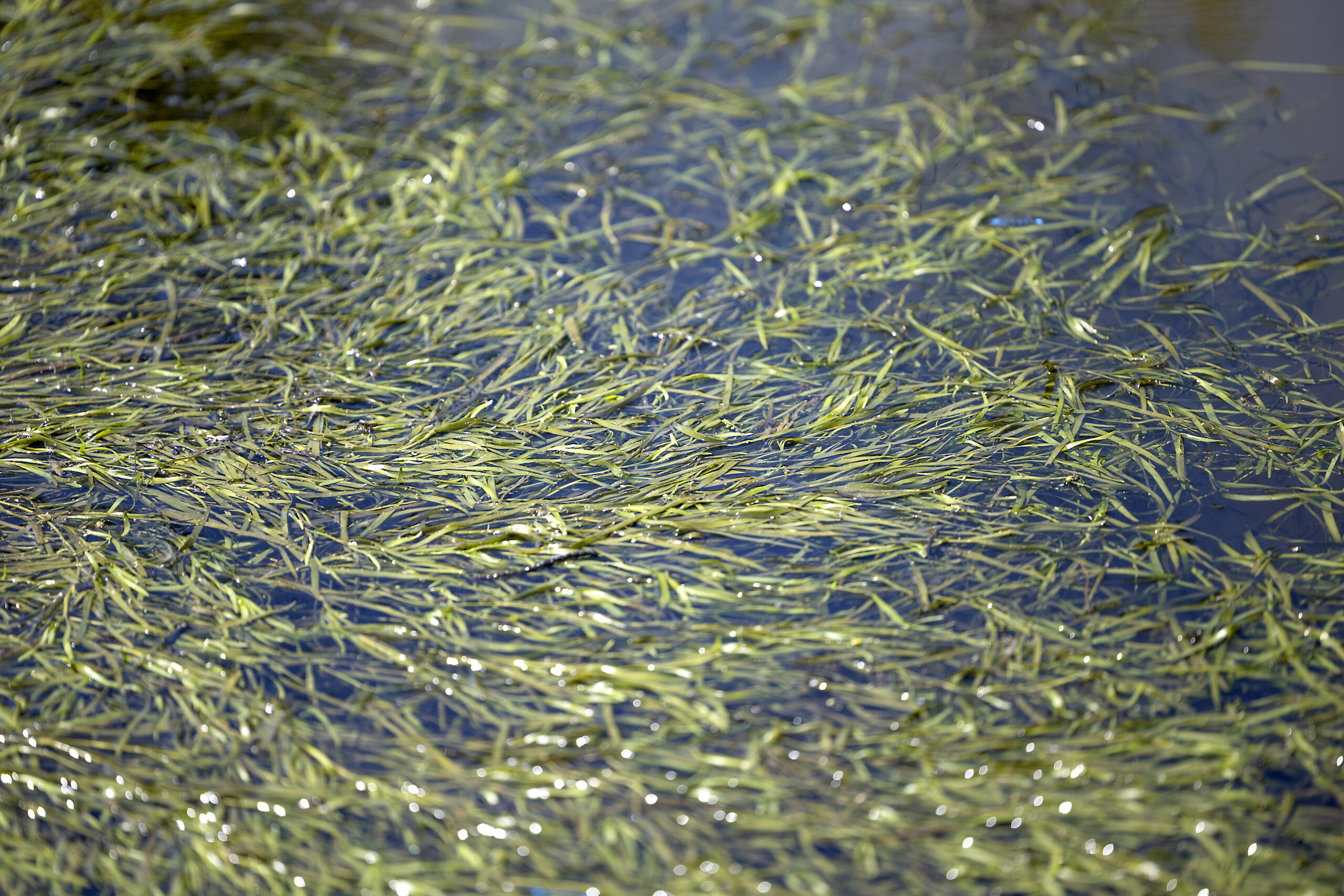
What happens next?
To date, more than 100 businesses, organizations and local and state politicians have endorsed the Mississippi River initiative, as well as nine Democratic cosponsors in Congress. No Republicans have signed on.
Advocates say GOP members have privately expressed support for the idea but want others in their party to sign on first — a sign of the politically difficult climate in D.C.
The clock is also ticking on a congressional session with loads of other priorities — as well as the midterm elections — to contend with.
“With the volatile economy and high inflation, MRRRI has not gotten a ton of attention — or maybe gotten the attention we had hoped it would have garnered by now,” said Scott Laeser, water program director for Clean Wisconsin, which has championed the bill. “But I don’t think that says anything about its long-term prospects.”
In an email, McCollum — the primary sponsor — wrote that she is working to win passage during the current session but that there are “many critical issues that need to be addressed in the remaining legislative days.”
“I’m always hopeful that we can find a place for visionary ideas like MRRRI, and I will keep fighting for this important proposal that will benefit all the communities along the Mississippi River,” she wrote.
Khan said she begins each pitch about MRRRI by underscoring that it’s a voluntary program, not a regulatory one. As such, she said there’s not been much disagreement about the importance something like this could have.
When the GLRI was re-authorized in 2019, nearly half of the co-sponsors were Republicans.
“People on both sides want to see more investments in the Great Lakes,” Khan said. “And I think that’s what we’re hopeful for in the Mississippi River.”
Madeline Heim and Caitlin Looby are Report for America corps reporters who write about environmental challenges in the Mississippi River Basin and the Great Lakes, respectively. Contact them at mheim@gannett.com and clooby@gannett.com. This story is a product of the Mississippi River Basin Ag & Water Desk, an editorially independent reporting network based at the University of Missouri School of Journalism in partnership with Report For America and funded by the Walton Family Foundation. Please consider supporting journalism that informs our democracy with a tax-deductible gift to this reporting effort at jsonline.com/RFA.

